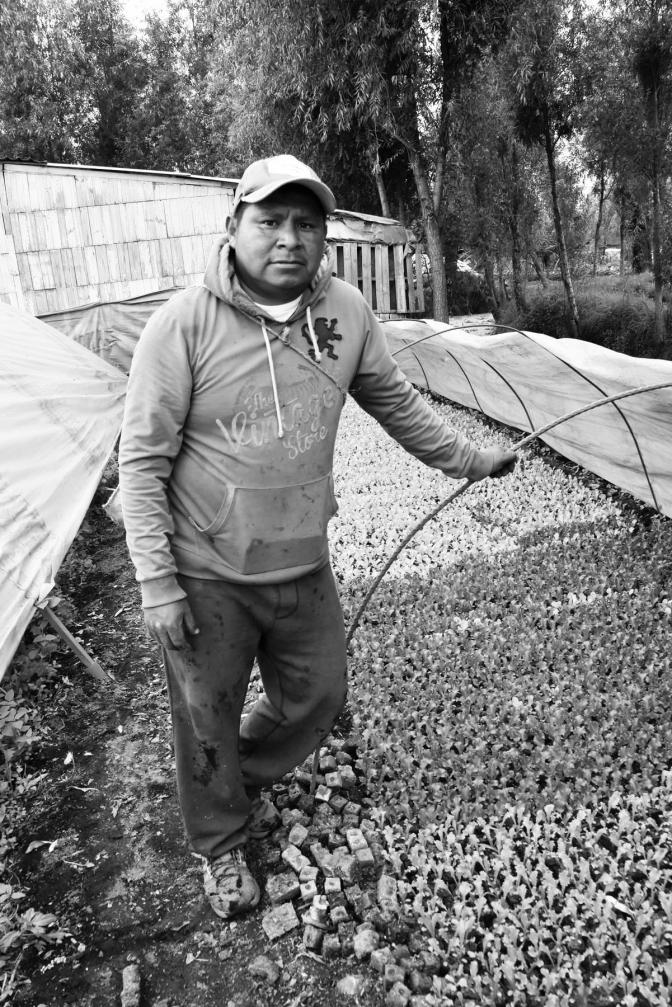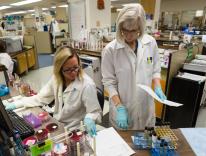People have been farming in Mexico City’s chinampería for at least three thousand years. The area is made up of manmade islands called chinampas built with mud and vegetation in shallow lakes and crisscrossed by canals. It once covered between twenty-two thousand and twenty-four thousand acres. It’s now been reduced to around six thousand acres, mostly because of Mexico City’s unregulated expansion. According to the United Nations Food and Agricultural Organization, in 2019 only 19 percent of the remaining chinampas were “active and cultivated.” But those active chinampas still produced forty thousand tons of produce in 2021. And their importance extends beyond the food they provide: the chinampería also accounts for 11 percent of Mexico City’s biodiversity, sequesters carbon emissions, and helps regulate the city’s temperature. Still, despite its economic and ecological importance, its survival is continually threatened by what locals call la mancha urbana, “the urban stain.” Every year it loses more land to haphazard development. Every year more water is extracted from its lakes and more pollutants are dumped into its canals.
Five years ago, when I first wrote about the chinampería for Commonweal, everyone I talked with believed it might survive for only another decade or two. Today, because of organizations and individuals who are fighting to save it, some locals dare to hope it could continue much longer.
Stepping out of a canoe onto Chinampa del Sol, a chinampa reclaimed by an organization called Arca Tierra, one can immediately see the land’s vast potential. Arca Tierra, founded in 2020 by Lucio Usobiaga, describes itself as “a local network of experts promoting good nutrition through regenerative agriculture and fair trade.” “Our mission is to help and know the chinampa,” said Joahna Hernández, the organization’s director of marketing and communication. “We regenerate the soil and make it productive to provide food of high quality.” So far, Arca Tierra has succeeded in recovering ten chinampas, or about twenty-five acres. “Often, when the grandparents who were chinamperos die, people don’t continue,” Hernández explained. “They abandon the land.” It’s not hard to see why. This kind of agriculture is extremely labor intensive and chinamperos earn very little, usually between $2,000 to $3,000 a year—barely enough to survive.

Juan Serralde has worked in the chinampería for his entire life. “This land has been in my family for four generations,” he told me. “Great-grandfather, grandfather, father, and me.” When I asked him what he needed to save it, he answered quickly: “Water, water, water. Before, the water came up to the same level as the land and when the sun came up, the water would evaporate and that would irrigate the plants. It was very intelligent, a perfect system. Now, the water is much lower than the land and that does not happen.”
Serralde has two chinampas just minutes from San Gregorio Atlapulco’s main street. When I first visited these six years ago, one nearby canal was completely dry and two others were very low. Serralde and other chinamperos have built several small dams to collect rainwater, one of which abuts his land. Because of the dams, canals that once had little water are now full again. “The dam is three meters high,” he explained. “It took three days to build—twenty people working four hours a day.” The dam is made of mud: tierra amarillo (yellow earth) from the hills surrounding the pueblo and, on top, tepetate, a hard, grainy soil used in construction. “The government paid for the materials, chinamperos paid for labor. The purpose is to save the water. The water is regulated so we can water the plants. It is all shared. If we did not control it, it would go from here to the zone below us where there is a lake.” A simple mechanism controls the water’s flow: a bucket placed in the opening of a pipe that runs through the dam. When a farmer needs water, he removed the bucket to clear the opening. On our way to see another dam, Serralde and I passed by a house. He jabbed a finger toward it. “That is illegal,” he said angrily. “Illegal. The mancha urbana is expanding. It is really our fault—human beings. We are using the chinampería poorly. We are destroying our land.”

In another part of the chinampería, I spoke with Samuel Avelino Luna, who has worked in the chinampería for most of his sixty-seven years and remembers a very different place. “There was a spring here,” he said. “It was the largest in San Gregorio.” He pointed to a street that ran along a chinampa. “That avenue was a canal and all of the canals were filled with water from the spring. There were many animals: carp, ajolotes, crayfish, turtles, frogs and, in other areas, freshwater clams.” Today, the landscape is very different, with more houses and empty canals. Another chinampero, Saúl Nicolás Hernández, told me that they once navigated the chinampería with canoes, which would be impossible today.
Like Serralde, Luna and Hernández have also constructed dams to save water, and they took me to see one of these. “This took three days to build with the help of seventy compañeros every day,” said Luna. It was back-breaking work: the soil had to be carted in from the street in wheelbarrows. “The government paid for the dirt and for some of the workers for this dam. But for others, we paid for everything. Sometimes people say we are idiots for working without pay, but it benefits us—we have the quantity of water we need to continue producing.”
What becomes clear immediately when you talk to people who work in the chinampería is that, despite all the real hardships and predictions of the chinampería’s imminent demise, they love the land and the work they do there, and they will do whatever they can to save it. Only time will tell whether that is enough. “We are a group that’s holding on so we do not lose this,” Hernández told me. “We have the advantage of planting in land that is so noble. I consider myself blessed to have been born here.”
